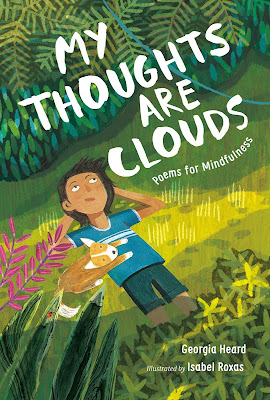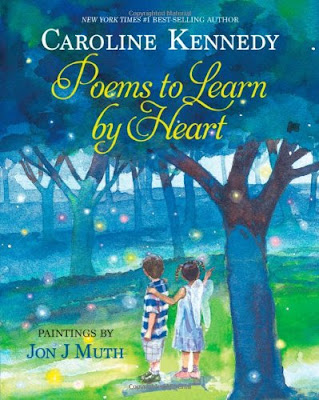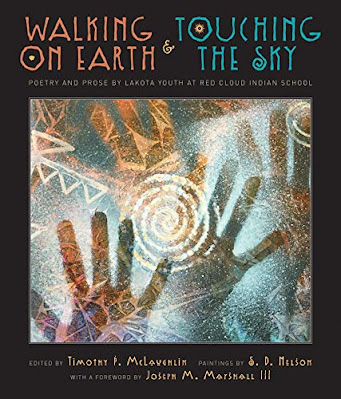They Called Us Enemy
THEY CALLED US ENEMY by George Takei, Justin Eisinger, Steven Scott, and Harmony Becker
This curiosity for the unvarnished truth is one of the many reasons why informational books, and especially memoirs, may be of interest to young people. Teenagers realize that they are often fed “official,” whitewashed versions of history, and as they discover that there are more sides to the story, they ask themselves, “What really happened? What voices are being silenced?” Memoirs are valuable windows into the first-hand experience of historical moments because they personalize history, transforming abstracted events into personally felt moments.
Many Americans may remain unaware of Executive Order 9066 which FDR signed in 1942 after the attack on Pearl Harbor. 120,000 Japanese Americans from all walks of life were forced from their homes at gunpoint and relocated to internment camps where they were made to live in harsh and unsanitary conditions. Even third-generation Japanese Americans had their loyalty questioned, incarcerated indiscriminately because of their racial ancestry. Forced to respond to unfair questionnaires, to questions that ensured their guilt no matter how they responded, these brave individuals organized their own communities within the camps and struggled to salvage their dignity in the face of dehumanizing mistreatment.
George Takei’s memoir illuminates this history from a child’s perspective. George was too young to fully grasp what was happening to his family and his country. When his family arrived at the first camp, George exclaims, “We get to sleep where the horses slept! Fun!” (Takei 2019, pp. 32). These moments of innocent naiveté are juxtaposed with Takei’s retrospective understanding of the horror and shame his parents carried as they tried to shield their children from harm. Only after the war, when George grew into a young man, did he begin to ask questions about what his childhood imprisonment was all about. “I had to learn about the internment from my father, during our after-dinner conversations. That remains part of the problem--that we don’t know the unpleasant aspects of American history… and therefore we don’t learn the lessons those chapters have to teach us. So we repeat them over and over again” (Takei 2019, pp. 174).
Remarkably, George Takei and his father never lost faith in American democracy. Instead, the injustices provoked civil engagement. Takei’s memoir details the beginnings of his acting career and Broadway performances which gave him the opportunity to meet Dr. Martin Luther King, Jr. and participate in the civil rights marches alongside these icons. These experiences of solidarity with other mistreated groups of Americans sparked a life-long dedication to social justice. Takei recognizes that the work is far from finished, referencing the Muslim travel ban and the ongoing crisis occurring in the immigrant detention centers in which children are separated from their families, and humans are subjected to harsh conditions, inedible food, extreme temperatures, and lack of access to showers and hygiene products. Takei’s tone is urgent, thoughtful, and patriotic. He connects events across time and leaves the reader with the message, “Our democracy is participatory democracy. Existentially, it’s dependent on people who cherish the shining, highest ideals of our democracy… and actively engage in the political process” (Takei 2019, pp. 175).
The graphic novel format is perfect for this memoir, and Harmony Becker’s beautifully rendered illustrations give this true story the impact it deserves. Poignant and humorous scenes, brisk pacing, and essential historical context, all make They Called Us Enemy a profound and accessible selection for any reader interested in American History, Civil Rights, and the backstory of a beloved cultural icon.
“Teenagers are curious. They are seekers of truth, and firm believers in justice. And they have built-in B.S. meters. They know alternative perspectives exist. And there are parts of humanity that the culture wants to silence. They’re aware that traditional versions of history often skirt the truth.”
Candace Fleming (Brock 2019, pp. 156)
Candace Fleming (Brock 2019, pp. 156)
This curiosity for the unvarnished truth is one of the many reasons why informational books, and especially memoirs, may be of interest to young people. Teenagers realize that they are often fed “official,” whitewashed versions of history, and as they discover that there are more sides to the story, they ask themselves, “What really happened? What voices are being silenced?” Memoirs are valuable windows into the first-hand experience of historical moments because they personalize history, transforming abstracted events into personally felt moments.
Many Americans may remain unaware of Executive Order 9066 which FDR signed in 1942 after the attack on Pearl Harbor. 120,000 Japanese Americans from all walks of life were forced from their homes at gunpoint and relocated to internment camps where they were made to live in harsh and unsanitary conditions. Even third-generation Japanese Americans had their loyalty questioned, incarcerated indiscriminately because of their racial ancestry. Forced to respond to unfair questionnaires, to questions that ensured their guilt no matter how they responded, these brave individuals organized their own communities within the camps and struggled to salvage their dignity in the face of dehumanizing mistreatment.
George Takei’s memoir illuminates this history from a child’s perspective. George was too young to fully grasp what was happening to his family and his country. When his family arrived at the first camp, George exclaims, “We get to sleep where the horses slept! Fun!” (Takei 2019, pp. 32). These moments of innocent naiveté are juxtaposed with Takei’s retrospective understanding of the horror and shame his parents carried as they tried to shield their children from harm. Only after the war, when George grew into a young man, did he begin to ask questions about what his childhood imprisonment was all about. “I had to learn about the internment from my father, during our after-dinner conversations. That remains part of the problem--that we don’t know the unpleasant aspects of American history… and therefore we don’t learn the lessons those chapters have to teach us. So we repeat them over and over again” (Takei 2019, pp. 174).
Remarkably, George Takei and his father never lost faith in American democracy. Instead, the injustices provoked civil engagement. Takei’s memoir details the beginnings of his acting career and Broadway performances which gave him the opportunity to meet Dr. Martin Luther King, Jr. and participate in the civil rights marches alongside these icons. These experiences of solidarity with other mistreated groups of Americans sparked a life-long dedication to social justice. Takei recognizes that the work is far from finished, referencing the Muslim travel ban and the ongoing crisis occurring in the immigrant detention centers in which children are separated from their families, and humans are subjected to harsh conditions, inedible food, extreme temperatures, and lack of access to showers and hygiene products. Takei’s tone is urgent, thoughtful, and patriotic. He connects events across time and leaves the reader with the message, “Our democracy is participatory democracy. Existentially, it’s dependent on people who cherish the shining, highest ideals of our democracy… and actively engage in the political process” (Takei 2019, pp. 175).
The graphic novel format is perfect for this memoir, and Harmony Becker’s beautifully rendered illustrations give this true story the impact it deserves. Poignant and humorous scenes, brisk pacing, and essential historical context, all make They Called Us Enemy a profound and accessible selection for any reader interested in American History, Civil Rights, and the backstory of a beloved cultural icon.
SYNOPSIS:
I wanted to keep my synopsis short, focusing on the startling fact of the incarceration of 120,000 Japanese Americans. For readers unfamiliar with this part of WWII history, this detail alone might inspire them to pick up this graphic memoir.SELECTED QUOTE:
“Most Japanese Americans from my parents’ generation didn’t like to talk about the internment with their children. As with many traumatic experiences, they were anguished by their memories and haunted by shame--for something that wasn’t their fault. Shame is a cruel thing. It should rest on the perpetrators… but they don’t carry it the way the victims do.” (Takei 2019, pp. 140)
I chose this quote because it highlights the psychological trauma that Japanese Americans had to endure. Although the United States government has apologized for these atrocities, human rights violations persist, and ironically, the shame rests most heavily on the recipients of the mistreatment rather than the perpetrators. I found this to be a profound truth for many victims of abuse and violence.
“The creators smoothly and cleverly embed the historical context within which Takei’s family’s story takes place, allowing readers to simultaneously experience the daily humiliations that they suffered in the camps while providing readers with a broader understanding of the federal legislation, lawsuits, and actions which led to and maintained this injustice. The heroes who fought against this and provided support to and within the Japanese American community, such as Fred Korematsu, the 442nd Regiment, Herbert Nicholson, and the ACLU’s Wayne Collins, are also highlighted, but the focus always remains on the many sacrifices that Takei’s parents made to ensure the safety and survival of their family while shielding their children from knowing the depths of the hatred they faced and danger they were in. The creators also highlight the dangerous parallels between the hate speech, stereotyping, and legislation used against Japanese Americans and the trajectory of current events.” Kirkus Reviews
“The manga-influenced art by Harmony Becker juxtaposes Takei’s childlike wonder over the ‘adventure’ of the train trip with the stress and worry carried by his parents. As much as possible, Takei’s parents took pains to ensure their children were shielded from the reality of their situation, though Takei still relates traumas and humiliations (and a few funny stories)... Using parallel scenes from Trump’s travel ban, in the closing pages, Takei challenges Americans to look to how past humanitarian injustices speak to current political debates. Giving a personal view into difficult history, Takei’s work is a testament to hope and tenacity in the face of adversity.” Publishers Weekly
BOOK REVIEW EXCERPTS:
“Becker’s spare, fine-lined, manga-inspired artwork focuses intently on faces and body language, keeping the story centered in the realm of the personal. Ultimately, though Takei is grateful for the official apologies he and other Japanese Americans received, he’s careful to note how similar attitudes today mean that other immigrant communities in America are facing discrimination and internment. This approachable, well-wrought graphic memoir is important reading, particularly in today’s political climate.” Sarah Hunter for Booklist“The creators smoothly and cleverly embed the historical context within which Takei’s family’s story takes place, allowing readers to simultaneously experience the daily humiliations that they suffered in the camps while providing readers with a broader understanding of the federal legislation, lawsuits, and actions which led to and maintained this injustice. The heroes who fought against this and provided support to and within the Japanese American community, such as Fred Korematsu, the 442nd Regiment, Herbert Nicholson, and the ACLU’s Wayne Collins, are also highlighted, but the focus always remains on the many sacrifices that Takei’s parents made to ensure the safety and survival of their family while shielding their children from knowing the depths of the hatred they faced and danger they were in. The creators also highlight the dangerous parallels between the hate speech, stereotyping, and legislation used against Japanese Americans and the trajectory of current events.” Kirkus Reviews
“The manga-influenced art by Harmony Becker juxtaposes Takei’s childlike wonder over the ‘adventure’ of the train trip with the stress and worry carried by his parents. As much as possible, Takei’s parents took pains to ensure their children were shielded from the reality of their situation, though Takei still relates traumas and humiliations (and a few funny stories)... Using parallel scenes from Trump’s travel ban, in the closing pages, Takei challenges Americans to look to how past humanitarian injustices speak to current political debates. Giving a personal view into difficult history, Takei’s work is a testament to hope and tenacity in the face of adversity.” Publishers Weekly
RELATED READS:
Internment by Samira Ahmed
This fictional novel imagines the internment of Muslim Americans in contemporary America in the wake of the Muslim travel ban. Ahmed draws heavily from the history of the Japanese-American internment camps, particularly the Manzanar camp in California, applying the scenario to current political events. Readers will recognize breathtaking similarities in the Takei’s and Ahmed’s stories, a chilling reminder that we must stay vigilant to the oppression of racial and ethnic groups in the United States.
The Hidden Girl and Other Stories by Ken Liu
This Chinese-American science fiction author combines fantasy and science fiction with historical elements. Though not explicitly written for young adults, his stories often feature a young adult protagonist dealing with the complexities of artificial intelligence, memory, internet trolling, extraterrestrial colonization, etc., which may appeal to precocious young readers interested in sci-fi. The story “Maxwell’s Demon” begins at the Tule Lake War Relocation Center, one of the locations of George Takei’s imprisonment. Seattle-born Takako Yamashiro must answer a loyalty questionnaire, including the infamous questions 27 and 28, which trapped Japanese Americans into making an impossible choice. Deported to Japan as a secret agent working for the US, Takoko becomes entangled in a subatomic particle experiment that blurs science with Japanese mysticism. It’s a brilliant story of patriotism and identity that will leave readers thinking.
The March Trilogy by John Lewis, Andrew Aydin, and Nate Powell
This graphic memoir trilogy, written by the late Civil Rights leader and Congressman John Lewis, is essential reading. It details the events of the lunch counter sit-ins, the Freedom Riders, Selma, the March on Washington, church bombings, the murder of Emmitt Till, and the formation of action groups such as the SNCC (Student Nonviolent Coordinating Committee), and much more. This trilogy is a profound accomplishment that is a must-read for anyone interested in the Civil Rights movement.
The Complete Maus by Art Spiegelman
Maus is the only graphic novel to win the Pulitzer Prize and remains one of the most important works of graphic literature to this day. This classic memoir recounts the story of Art Spiegelman’s parents who survived the Holocaust and immigrated to the United States. The story alternates between scenes of Art interviewing his father in his New York apartment and flashbacks to the concentration camps.
The Hidden Girl and Other Stories by Ken Liu
This Chinese-American science fiction author combines fantasy and science fiction with historical elements. Though not explicitly written for young adults, his stories often feature a young adult protagonist dealing with the complexities of artificial intelligence, memory, internet trolling, extraterrestrial colonization, etc., which may appeal to precocious young readers interested in sci-fi. The story “Maxwell’s Demon” begins at the Tule Lake War Relocation Center, one of the locations of George Takei’s imprisonment. Seattle-born Takako Yamashiro must answer a loyalty questionnaire, including the infamous questions 27 and 28, which trapped Japanese Americans into making an impossible choice. Deported to Japan as a secret agent working for the US, Takoko becomes entangled in a subatomic particle experiment that blurs science with Japanese mysticism. It’s a brilliant story of patriotism and identity that will leave readers thinking.
The March Trilogy by John Lewis, Andrew Aydin, and Nate Powell
This graphic memoir trilogy, written by the late Civil Rights leader and Congressman John Lewis, is essential reading. It details the events of the lunch counter sit-ins, the Freedom Riders, Selma, the March on Washington, church bombings, the murder of Emmitt Till, and the formation of action groups such as the SNCC (Student Nonviolent Coordinating Committee), and much more. This trilogy is a profound accomplishment that is a must-read for anyone interested in the Civil Rights movement.
The Complete Maus by Art Spiegelman
Maus is the only graphic novel to win the Pulitzer Prize and remains one of the most important works of graphic literature to this day. This classic memoir recounts the story of Art Spiegelman’s parents who survived the Holocaust and immigrated to the United States. The story alternates between scenes of Art interviewing his father in his New York apartment and flashbacks to the concentration camps.
REFERENCES:
Ahmed, S. (2019). Internment. Little, Brown Books for Young Readers.
Brock, R. (2019). Young adult literature in action. Libraries Unlimited.
Becker, H. (2019). [They called us enemy: Inside cover] [Illustration]. Top Shelf.
Lewis, J., Aydin, A., & Powell, N. (2016). March (trilogy slipcase set). Top Shelf.
Liu, Ken. (2020). The hidden girl and other stories. Saga Press.
Spiegelman, A. (1996). The complete Maus. Pantheon.
Takei, G., Eisinger, J., Scott, S., & Becker, H. (2019). They called us enemy. Top Shelf.
Brock, R. (2019). Young adult literature in action. Libraries Unlimited.
Becker, H. (2019). [They called us enemy: Inside cover] [Illustration]. Top Shelf.
Lewis, J., Aydin, A., & Powell, N. (2016). March (trilogy slipcase set). Top Shelf.
Liu, Ken. (2020). The hidden girl and other stories. Saga Press.
Spiegelman, A. (1996). The complete Maus. Pantheon.
Takei, G., Eisinger, J., Scott, S., & Becker, H. (2019). They called us enemy. Top Shelf.




Comments
Post a Comment